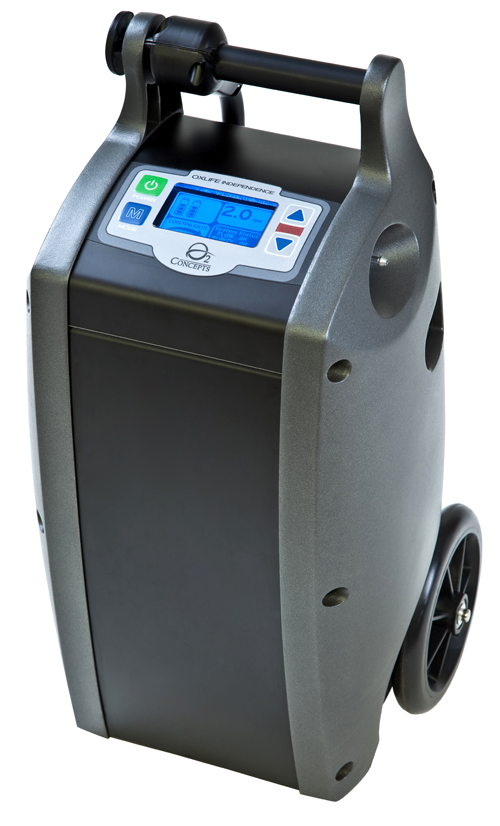7 Easy Facts About Portable Oxygen Concentrators Shown
Table of ContentsGetting My Portable Oxygen Concentrators To WorkPortable Oxygen Concentrators - An Overview6 Easy Facts About Portable Oxygen Concentrators ShownSome Known Questions About Portable Oxygen Concentrators.
Stationary oxygen concentrators were once the criterion, but these containers could weigh 50 pounds and were really cumbersome (Portable Oxygen Concentrators). Currently, mobile oxygen concentrators finish the job, and they can suit a bag or handbag! The only point you ought to remember is that mobile concentrators have more restricted oxygen distribution abilitiesThere are 2 major kinds of portable oxygen concentrators: pulse dosage and continuous flow. As the name recommends, pulse dosage concentrators offer oxygen intermittently, only triggering when you inhale. This kind of tool is typically recommended for COPD people with limited oxygen needs, as the quantity of O2 that a pulse dose concentrator can deliver is reasonably low.
This tool can provide up to 3,000 m, L of oxygen every min, while pulse dosage tools have a tendency to top out at 1250 m, L. Continual flow devices are the go-to for many COPD people, as they're perfect for individuals who need two to 5 liters of oxygen a min.
Currently that you have this guide to the different kinds of portable oxygen makers, choose the finest device with the help of your medical professional.
How Portable Oxygen Concentrators can Save You Time, Stress, and Money.
We asked yourself exactly how well these portable oxygen concentrators would function in healthcare facilities. POC concentrators enhance the percentage of oxygen in ambient air individuals take a breath in, whenever they require a boost.
When it involves mobile oxygen therapy, there are two primary options for distribution. These are portable oxygen cyndrical tubes which consist of pressed oxygen gas, or oxygen concentrators, which use a battery powered system to compress and filter air, in order to produce a regular supply of concentrated oxygen. In this blog post, AMS Compound Cylinders Technical Supervisor, Tony Morrin, compares both, considering the pros and cons of each oxygen shipment system for NHS medical oxygen individuals in terms of person freedom.

Mobile Oxygen Concentrator Oxygen pureness is constantly higher when supplied from cyndrical tubes it never drops below 99. Whilst oxygen concentrators can be helpful for patients that call for a lower circulation of oxygen, cyndrical tubes provide greater focus that can be more suitable for patients with high circulation requirements.
What Does Portable Oxygen Concentrators Do?
Both systems require the client to bring about equipment. For cyndrical tubes, this will include lugging a bag (and sometimes a trolley) and for portable oxygen view publisher site concentrators this click here to find out more will include the bag, cart and power charger. Weight wise, mobile oxygen concentrators can be comparable in weight, or often, lighter than standard aluminium cyndrical tube systems.
They will certainly need to improve substantially if they are to give the very same degree of efficiency as equivalent composite cylinders. Oxygen constantly carries a safety risk. On one hand, should cylinders spring a leakage, they can develop an oxygen rich atmosphere that can result in an increase in fire threat.

The distinction is that there are substantial in advance expenses to purchasing a portable oxygen concentrator, but reduced running costs using cyndrical tubes makes it possible for the purchaser to spread the price over an extended duration of time. One small downside of a portable oxygen concentrator is the sound mobile systems make a substantial quantity of noise throughout procedure, which lots of individuals discover distracting.
The Main Principles Of Portable Oxygen Concentrators

Our top notch carbon composite cylinders use high stress (300 Bar), reduced weight, and NLL (Non-Limited Life) performance, and are accredited for use worldwide. More info concerning blog here AMS Composite Cylinders Ltd can be located at .
Oxygen concentrators are developed with customer flexibility in mind. Whether it's a desktop computer variation for home usage or a smaller sized, light-weight version for on-the-go, these tools enable individuals to relocate easily without being tethered to a stationary unit. Especially for the ones specifically designed for transportability, people can lug them about, promoting traveling and everyday activities easily.
Among the significant benefits of using an oxygen concentrator is the removal of the constant need to refill oxygen tanks. This not just minimizes the logistical challenges and recurrent costs connected with refills however also ensures that the customer has a much more predictable and constant source of oxygen. Oxygen concentrators are designed to fit flawlessly right into the home setting.